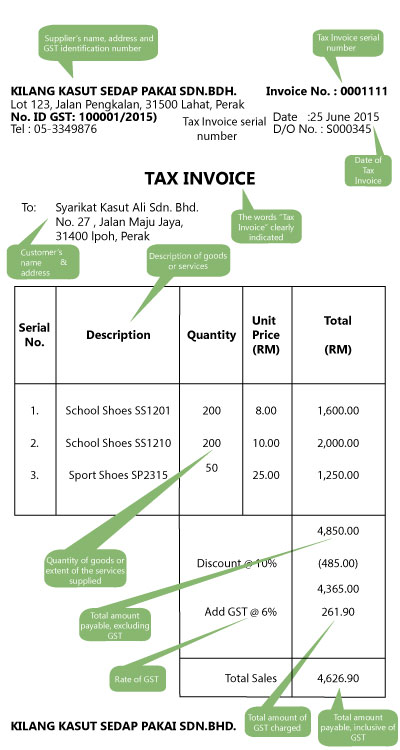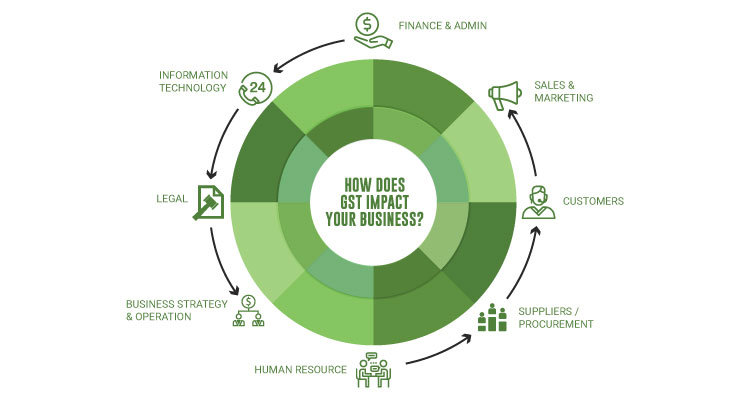Knowing how to properly invoice your customers is a fundamental skill for business owners of all-sizes to master. Not only does it ensure that you get compensated for your goods or products, it also prevents any costly mistakes when it comes to your taxes and keeps your accounts in good order. For many businesses around the world, this also means creating a GST tax invoice.
This type of invoice includes the indirect tax amount for each specified good or service that your business charged to customers. The amount of this tax varies from country to country, but GST has become one of the most important tax reforms in the history of countries like India. Additionally, GST has been fully implemented on April 1, 2017 – which means that it’s also mandatory for eligible business owners.
In most countries, GST is aiming to remove tax barriers between states and create a single market. This would create benefits like;
- Eliminating multiple indirect taxes, which will simply tax structures.
- Encouraging healthy competition.
- Reducing tax evasion and corruption.
- Reducing the price of good and services.
- Increasing GDP.
- Reducing the hidden costs of operating a business.
- Simplifying administrative tasks by automating registration, return filing and payments, and real-time data sharing between GSTN and tax administrations.
Do you have to register for a GST number?
If you’re a sole proprietor, partnership, or corporation, then you probably should register for a GST number. But, keep in mind that it’s not mandatory in every country – most notably the U.S.
Table of Contents
ToggleHere are 10 Easy steps for GST Enrollment:

GST, however, is implemented in 160 countries. If your business operates in one of these countries, then you can register online. Since the application process varies from country to country, I would recommend doing a quick Google search, like “gst registration India’ so that you register with the correct government agency.
Tips on Preparing Your GST Tax Invoice

Now that you’re registered, here are 15 tips on preparing your GST tax invoice.
1. Name and Address
Like a sales invoice, the first piece of information that you need to include is your business name and address. Make sure that you use the same address that you registered to obtain your GST number with. If you have multiple offices in different states, then use the address that’s on your registration.
2. GST/GSTIN Number
This is the alpha-numeric number that was assigned to you. It’s needed to verify that you’re registered. In India, this number is 15-digits long with the first two digits representing the state code followed by the the PAN number of the taxpayer.
3. GST Tax Invoice Number
Like a regular invoice, you’ll need a consecutive serial number that contains only alphabets and/or numerals that is unique to that specific invoice.
4. Date of GST Invoice
This is simply the date that the GST tax invoice was issued. In most cases, this is within 30 days from the date that the service was supplied.
5. Recipient Details in GST Invoice
You’re required to include the name, Address, GST/GSTIN number, and the address of the customer. In countries like India you’ll also have to include the name of the State they’re located and its code.
6. HSN Code or SAC Code
HSN is the abbreviation for Harmonized System of Nomenclature and is the internationally accepted product coding system that is used to maintain uniformity in classification of goods. SAC stands for Service Accounting Codes and are adopted by the Central Board of Excise and Customs (CBEC) for identification of the services that you provided.
7. Description of Goods or Description of Services
Like a sales invoice, you also need to list a description of the goods or services provided and the quantity sold.
8. Total Value of Sales and Taxable Value of Sales
One of the most important components of a GST tax invoice is both the total value of sales and taxable value of sales. They need to be clearly and separated on the invoice. If there is a discount or abatement, this can be accounted prior to mentioning the total value of sales.
9. Rate of GST
This is a 4-tier tax structure that will vary depending on the transaction. For example, essential items, like food, won’t be taxed, while luxury items like luxury cars will taxed the highest rate.
10. Amount of GST Charged
The type of supply, where the supply is made, and who the supply is made to will determine the GST rate. However, in countries like Australia, the GST rate is 10%. So, if your invoice is $100, then the calculated GST would be $10. There are handy GST calculators, like this one for Canada and this for India, that can assist you in determining the amount of GST you have to charge.
11. Tax Payable on Reverse Charges
If GST is payable on reverse charges, then you need to clearly mention this as ‘GST PAID ON REVERSE CHARGES’ in the GST Invoice.
12. Revised Invoice
If GST Invoice is a revised, this information also has to be clearly mentioned as ‘REVISED INVOICE’ in the GST Tax Invoice. Typically, the Invoice Number will remain the same as the one issued on the original invoice with the updated changes. If you’ve made any changes in the invoice number or date this also to be mentioned.
13. Supplementary Invoice
If the GST Invoice is a supplementary invoice to the previously issued Invoice, then you need to include ‘SUPPLEMENTARY INVOICE’ to the invoice number.
14. Terms of Payment Details
Similar to a sales invoice, a GTS tax invoice should also contain payment details like how you’re going to be paid and when the due date of the invoice.
15. Signature of the Supplier
A GST Tax Invoice has to be signed by the supplier, or at least an authorized signatory. A digital signature can also be used.
Conclusion
If you’re a business owner, then it’s in your best interest to register for a GST number since it improves tax systems by making them more efficient, effective, and transparent. As such, you may also be required to generate GST tax invoices. It may sound complicated, but it’s actually similar to a sales invoice. And, if you follow the tips listed above, then preparing a GST tax invoice should be a breeze.
Check out some of our other business tips








